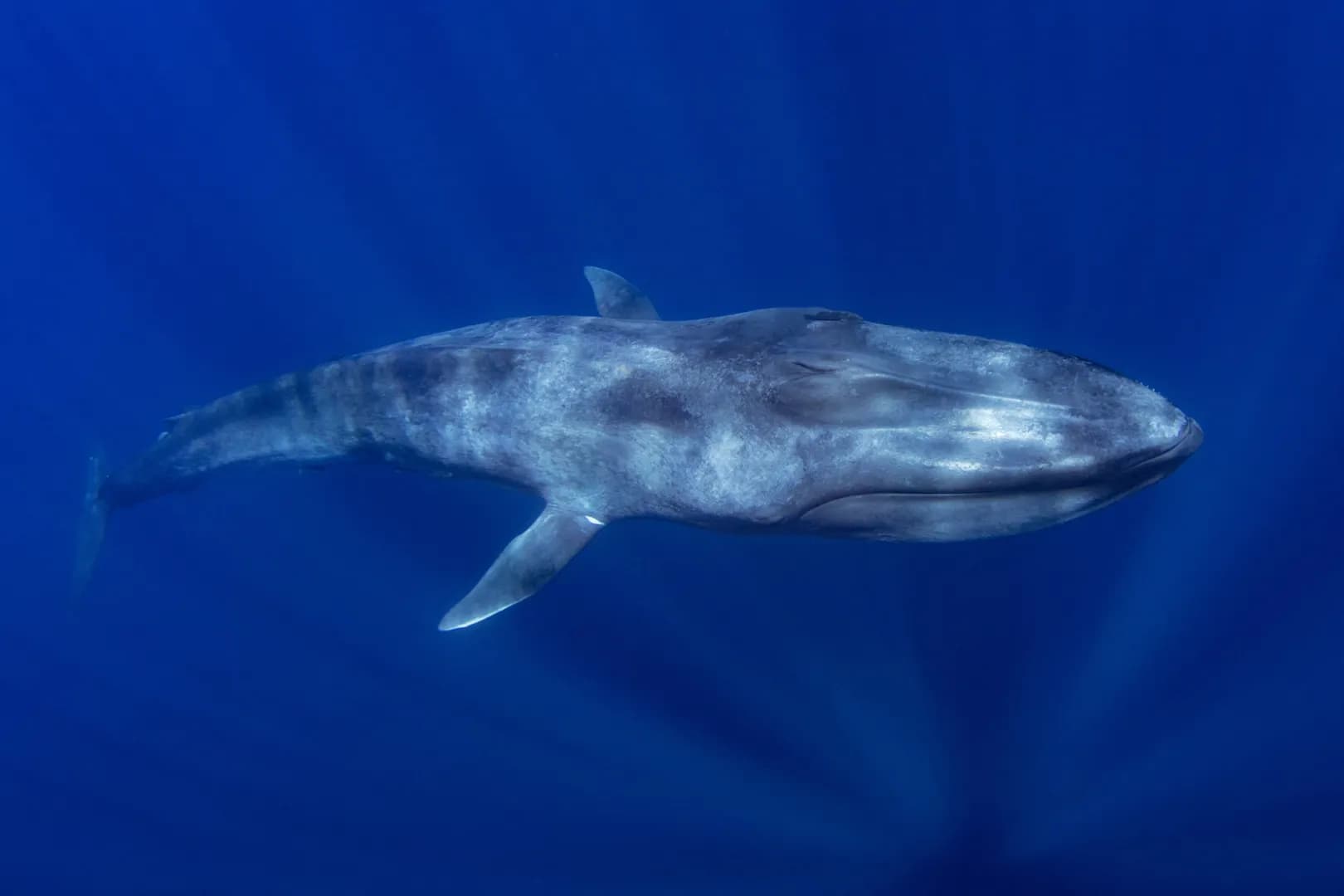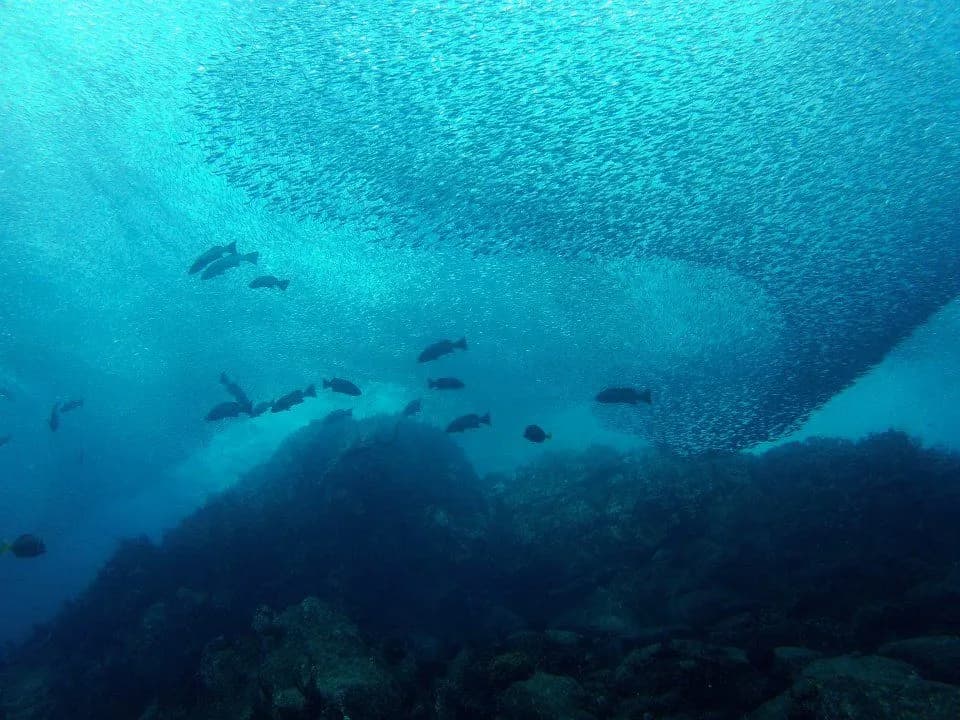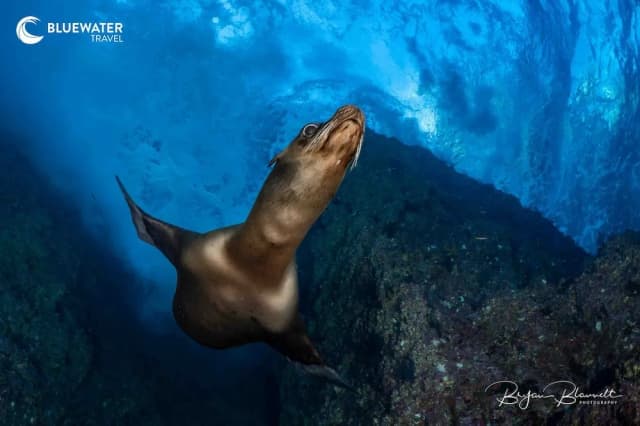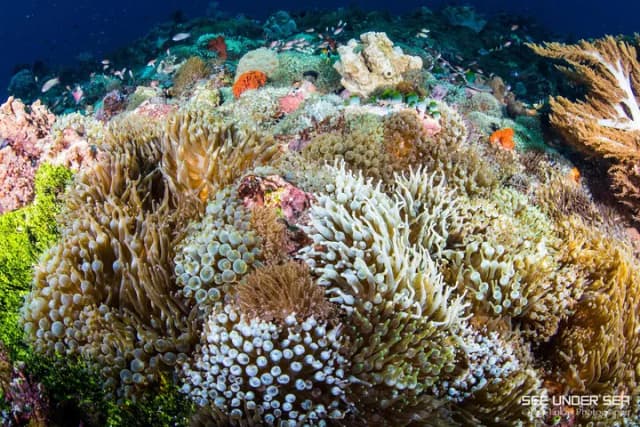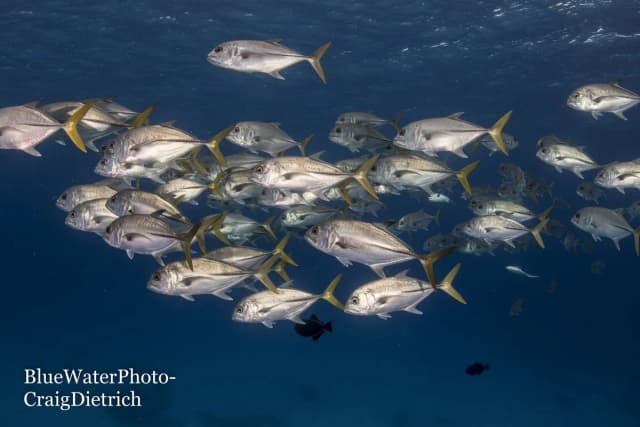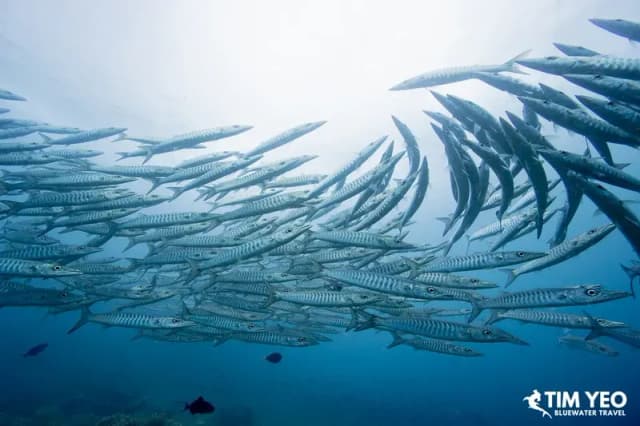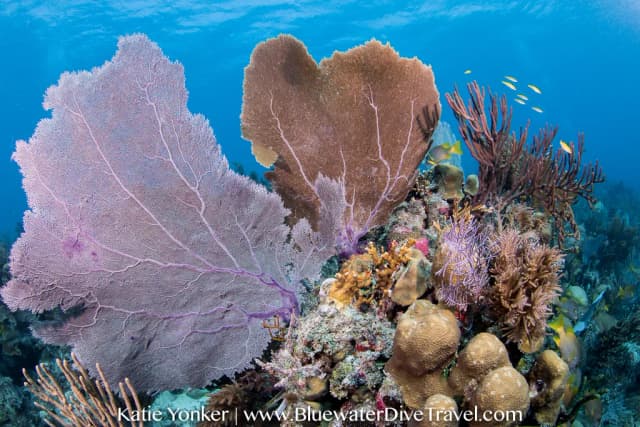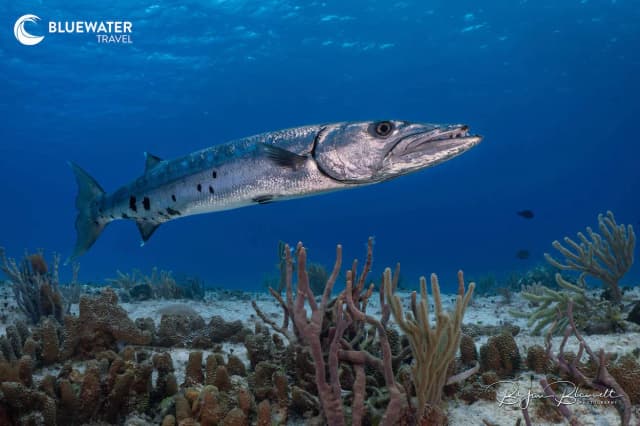The World's Best Places to See Blue Whales
Blue whales are the largest animals to ever live on our planet, and at nearly 90 feet long, they shouldn't be too hard to spot! However, these solitary marine mammals are classed as 'Endangered' on the IUCN Red List, and with only a few thousand left in the ocean, knowing where to look for them is key.
Here at Bluewater, the staff and travel advisors have rounded up some of the world's best places to see blue whales. Because these whales travel alone or in small pods, getting in the water with them is more difficult than with other whales, such as swimming with humpback whales. Even so, there are some destinations where it is possible to experience these amazing marine giants on a whale-watching boat trip.
Note: We strive to promote responsible tourism and encourage our guests to do some research prior to engaging in any activities that may disrupt marine mammals' natural behavior or damage their habitats. Follow the link for a comprehensive list of translated whale-watching guidelines for every country that has guidelines in place, per the International Whaling Commission.
Join Bluewater's Indian Ocean Blue Whales Elite Expedition in March 2025. Led by renowned photographer Amos Nachoum, this is a once-in-a-lifetime trip to encounter blue whales in the Indian Ocean.
So, if you're wondering where to see blue whales, look no further; we've got you covered. Let's get into it.
1. Los Cabos, Mexico
Offering up some of the richest waters in the eastern Pacific, Mexico's southern Baja Peninsula guards the junction between the Pacific Ocean and the Sea of Cortez, which makes it one of the best places to see blue whales. Larger marine species abound in these waters, and blue whales are amongst the most impressive cetaceans regularly encountered during the winter and spring. As many as 3,000 individuals migrate north through the eastern Pacific from tropical to polar waters each year, and Los Cabos is one of the most reliable places to see them.
As well as seeing blue whales, Cabo San Lucas and Cabo Pulmo are hotspots for finding other whale species, such as humpbacks, sperm whales, and gray whales. Further north into the Sea of Cortez, orcas, huge pods of dolphins, and resident pilot whales can often be spotted.
One of the best ways to discover all this fantastic wildlife is on a boat trip that takes you off-shore and into the heart of the ocean. If you prefer to be shore-based, consider a day trip with a local scientific or research operator such as Latitude Encounters. Alternatively, for a fully immersive experience, a liveaboard will offer you the chance to discover the best of the Sea of Cortez both above and below the waterline. One of our favorites is the Rocio del Mar, which runs a variety of itineraries depending on the season.
Practical Information
Los Cabos International Airport (SJD) is the main international airport servicing the region and receives multiple daily flights from the US. Taxis, car rentals, and shared transport are readily available on arrival. Once in the area, there is a huge range of accommodations available, from all-inclusive resorts to small B&Bs and guest houses. There are many whale-watching and ocean safari operators, as well as numerous dive shops in the Los Cabos area. Day trips for diving, snorkeling, and wildlife watching will often be on traditional wooden pangas.
Diving is available year-round, although the best time to spot blue whales is between November and April. At this time of year, the water temperature tends to be between 68 and 75F (20 to 24C).
2. California, USA
Every year, between June and September, blue whales migrate along the Californian coast, traveling between their feeding grounds in the Arctic and tropical southern mating and birthing areas. Whale watching is a long-standing tradition in California, with northern areas such as McKerricher State Park and Mendocino Headlands State Park offering excellent vantage points for land-based whale sightings.
In Central California, there are more than 20 designated whale watching spots along the coast at famous sites such as Monterey Bay, as well as blue whale safaris to the Farallon Islands between July and November. These islands are a key feeding area for several whale species, including blue, grey, and humpback whales. And in the south of the state, Santa Barbara, in particular, is one of the best spots in the world to watch blue whales from shore. Between June and November, numerous types of whales, dolphins, and even orcas can be regularly seen close to the beach.
While boat trips and day safaris are available, California offers excellent opportunities to see blue whales from the mainland. The whales often come in very close to shore, so this is one of the best ways to get great sightings whilst having no impact on the whales. Southern California is also a great dive destination, with dramatic kelp forests and large schools of fish offering some exciting underwater encounters.
Practical Information
The main airport servicing Southern California is Los Angeles International Airport (LAX); however, San Diego International Airport (SAN) also has both international and domestic flights. Once in California, the easiest way to get around is to hire a car and drive.
Scuba Diving in Southern California can be done via shore or by boat, with boat diving generally offering much better underwater conditions. There are some sites more suitable for experienced divers with stronger currents and deeper depths, but you can also find shallower sites for beginner divers. Conditions for scuba diving in Southern California are good all year round, however, the best time to dive is during fall when visibility is better and the wind calmer. The average water temperatures reach 68F (20C) during the summer and drop to 57 to 59F (14 to 15C) in the winter months.
3. Mirissa, Sri Lanka
Whale watching has been on the increase in Sri Lanka over the past ten years, and one of the key areas to spot blue whales is around Mirissa in the southwest of the country. Between December and March, migrating blue whales, along with sperm whales and Bryde's whales, attract vast numbers of whale-watching boats to spot and swim with the whales. Unfortunately, there is little control over the whale-watching industry in Sri Lanka, with many illegal boats and swimming tours chasing and harassing whales well outside the poorly enforced regulations. Therefore, it is crucial to choose a government-approved operator with the correct licenses for whale watching. Be aware that whale swimming in Sri Lanka is illegal, so even if that option is offered to you, we ask that you respectfully decline and choose a more responsible tour operator.
The Sri Lankan blue whale population does not migrate to the poles like other blue whale species but is resident at the same latitude year-round. Instead, they undertake a westward migration past the Maldives to the waters south of Oman. You can often see blue whales in the waters around the Maldives between November and May.
Practical Information
Flights from the US into the main airport of Bandaranaike International Airport (CMB) will transit through the European or Middle Eastern hubs. Direct flights are available from Europe and Asia. Once in-country, it is relatively easy to get around with trains, buses, taxis, and tuk-tuks all readily available. There are accommodation options for all tastes and budgets, from homestays and lodges to hotels, resorts, and villas. There are also a good number of eco options. Numerous dive and whale-watching operators work with the hotels to offer day trips by small boat.
Diving is possible in Sri Lanka year-round, with coastal regions enjoying average air temperatures of 77-86F (25-30C). Over the winter months of October to February, the west and southwest coasts enjoy favorable weather, and the eastern and northern regions experience monsoons. December to mid-April is the peak tourist season, and the southwest of the island can become busy.
Other Great Places To See Blue Whales
There are a few other fantastic destinations where blue whales are regularly spotted. In the northern hemisphere, they can be seen in their largest numbers along the northern coast of Quebec and around Iceland in May and June. Further south, they migrate past the Azores and the Canary Islands throughout the winter and spring.
In the southern hemisphere, blue whales can be seen around the Maldives and as far south as Chile and Antarctica.
If you've been wondering where to see blue whales, we hope we've helped! Feel free to reach out if you have any more questions.
Have you been to any of these places? Is there another place that you think should be on this list? Let us know your thoughts!
Responsible Whale Watching With Blue Whales:
Is it safe to get into the water with blue whales?
Although huge by size, blue whales are not interested in boats or people. They eat krill, tiny crustaceans that they filter from the water with baleen plates in their mouth. It is safe to swim with whales, but do listen to the instructions of your guide. Be respectful to the whales by keeping your distance and not touching them. Blue whales themselves avoid anything or anybody on their path, and they are very aware of their surroundings. Only be mindful of their tail, as they cannot see who is behind them.
Can you hear whales singing underwater?
Hearing whale songs is a magical experience, and it is possible to hear them very clearly while you are underwater. You can even hear a whale song from miles away. So listen closely on your next trip!
Is it better to scuba dive or swim with blue whales?
Whale excursions are organized as watching or snorkel trips, and scuba diving is generally prohibited in many whale destinations. While it is possible to swim with blue whales in some destinations, their solitary nature means they don't tend to stick around in one spot very long. Watching from a boat is usually the best way to get the most out of your experience.
Further Reading
Check out these useful resources from our sister websites, Bluewater Photo and Underwater Photography Guide:
Moorea Whale Snorkeling Trip Report 2021
